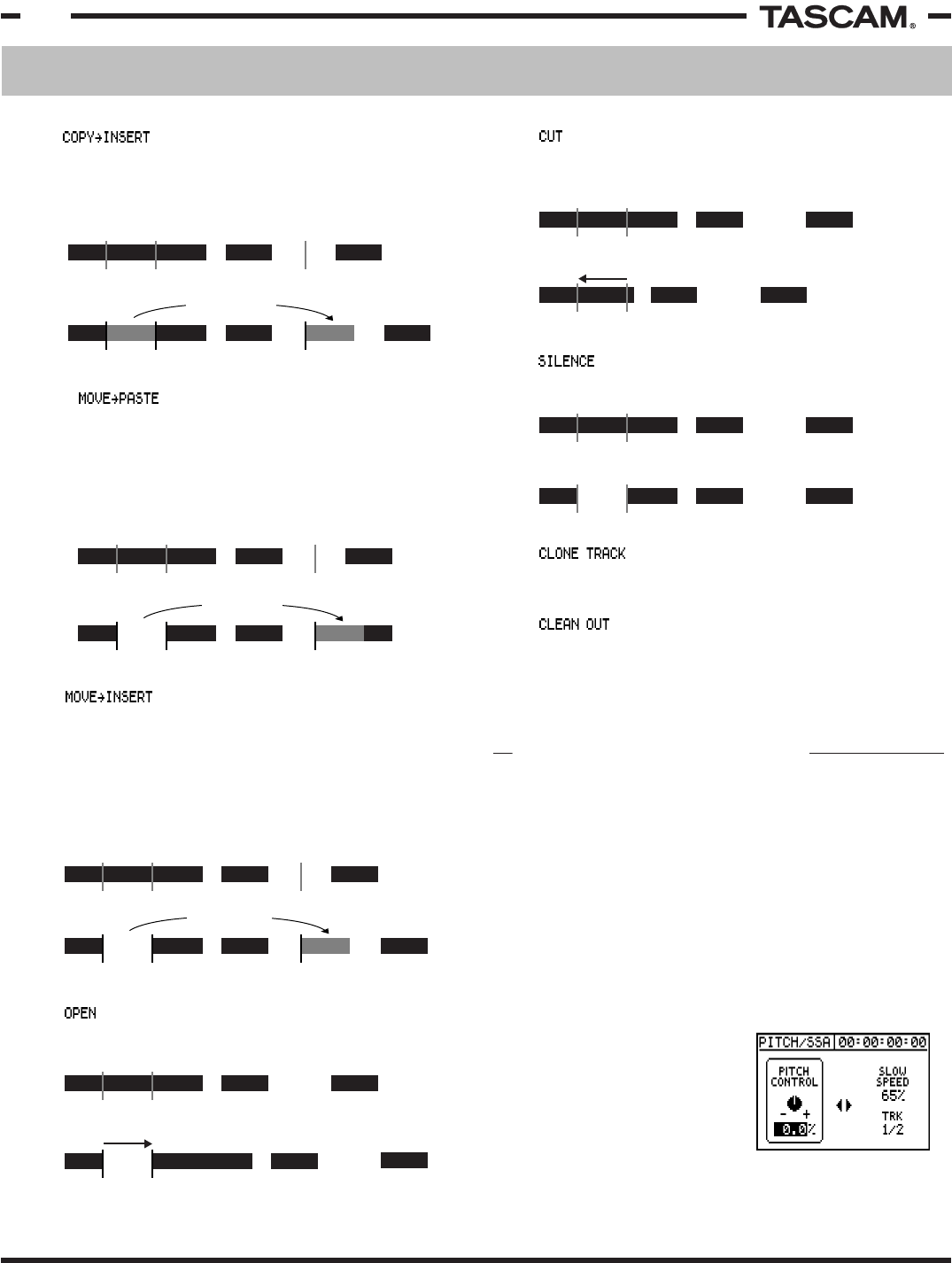
Recording & Editing Functions TASCAM 788 Operational Tutorial • 8/2000 Edition
18
Section IIIRecording & Editing Functions (Continued)
The 788 has two different types of speed control: PITCH
CONTROL and SSA. PITCH CONTROL simulates a tape
machine's pitch adjustment, which will alter the speed
and pitch at the same time of up to ±6%. SSA stands
for SLOW SPEED AUDITION, which keeps the pitch
constant, but slows the tempo down to 85%, 65%, or
50% of normal. SSA can be applied to any stereo pair
of tracks. SSA is strictly a playback function useful
for slowing down fast passages of songs you are trying
to learn.
In order to access the PITCH /SSA control window, press
and hold the PITCH/SSA button
for about a second. A window
will appear displaying the
settings for PITCH or SLOW
SPEED AUDITION.
The left and right arrows will
select between the two functions,
and the JOG/DATA wheel adjusts the parameters. To
exit the screen, press ENTER/YES.
PITCH CONTROL / SSA
IN OUT TO
moves the audio between the IN and
OUT locate points and inserts it at the TO point.
moving all other audio down the length of
section being copied. The key difference between
MOVE>INSERT and COPY>INSERT is that
MOVE>PASTE deletes the original audio between
the IN and OUT point.
IN OUT TO
MOVE>INSERT
IN OUT
IN OUT
inserts blank space between the IN and OUT
points. All audio after the IN point is moved down
OPEN
IN OUT
removes everything between the IN and OUT
points. All audio after the OUT points is moved
up to the IN point.
IN OUT
CUT
allows you to copy a physical track
to another physical track. (ie - Copying all of
the audio from track 1 to track 5.)
deletes any audio not used in a song
in order to reclaim more hard drive space for
more record time. This will delete virtual tracks,
audio edited out, audio recorded over, etc. This
function cannot be undone.
IN OUT
removes recorded audio between the IN
and out points, but does not affect the time line.
SILENCE
IN OUT
IN OUT TO
IN OUT TO
IN OUT TO
MOVE>PASTE
IN OUT TO
COPY>INSERT
copies the audio between the IN and
OUT locate points and inserts it at the TO point,
moving all other audio down the length of the
section being copied.
moves the audio between the IN and
OUT locate points and pastes it over any pre-
existing audio starting at the TO locate point.
The key difference between MOVE>PASTE and
COPY>PASTE is that MOVE>PASTE deletes the
original audio between the IN and OUT point.
